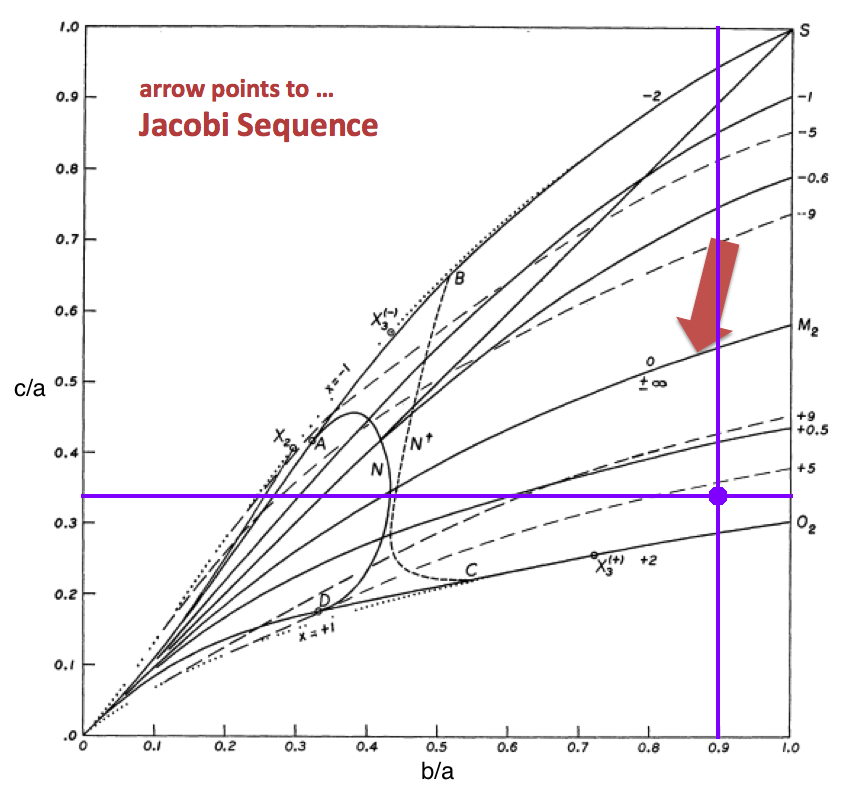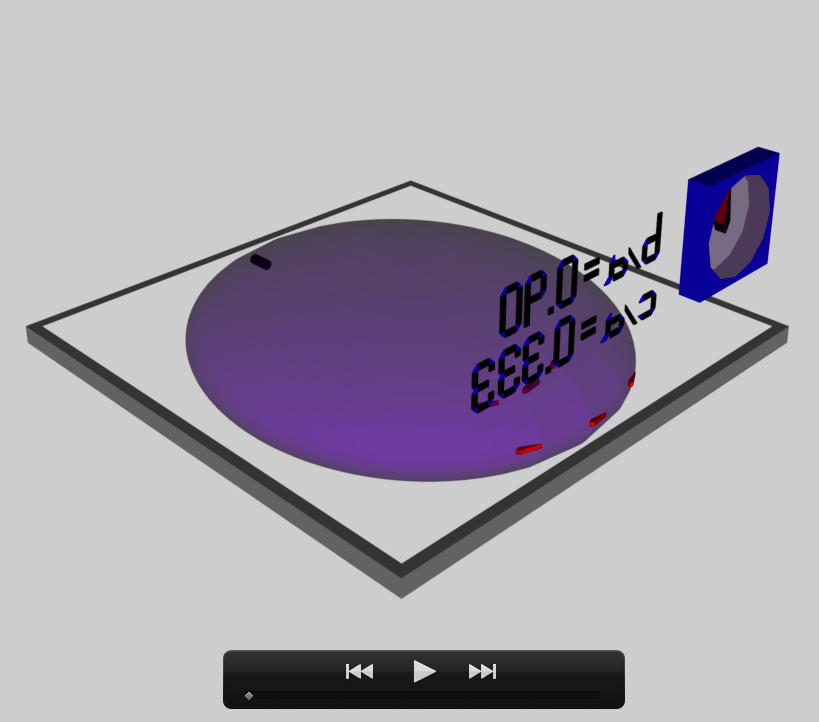Difference between revisions of "User:Tohline/Appendix/Ramblings/RiemannB90C333"
| Line 82: | Line 82: | ||
<li>Rotating Frame: <font color="lightgreen">[KEEP]</font> TestMulti74.dae [02 June 2020]</li> | <li>Rotating Frame: <font color="lightgreen">[KEEP]</font> TestMulti74.dae [02 June 2020]</li> | ||
</ul> | </ul> | ||
<li><font color="darkgreen"><b>FastRot74.dae</b></font></li> | <li><font color="darkgreen"><b>FastRot74.dae</b></font> | ||
<br />Identical to <b>TestMulti74.dae</b> except wall-mounted labeling has been changed to reflect new values of b/a and c/a. | |||
</li> | |||
</ul> | </ul> | ||
| Line 92: | Line 94: | ||
<li>Rotating Frame: </li> | <li>Rotating Frame: </li> | ||
</ol> | </ol> | ||
=See Also= | =See Also= | ||
Revision as of 20:02, 3 June 2020
Another S-type Example b90c333
This chapter is an extension of the chapter we have titled, "Riemann Meets COLLADA & Oculus Rift S." In that chapter we used as our first example of a Riemann S-type ellipsoid the model with parameters, (b/a, c/a) = (0.41, 0.385). Here we construct a model with parameters, (b/a, c/a) = (0.90, 0.333). Other closely related chapters are listed below under the heading, "See Also".

|
|---|
| | Tiled Menu | Tables of Content | Banner Video | Tohline Home Page | |
Key Physical Parameters
The model that we have chosen to use in our second successful construction of a COLLADA-based, 3D and interactive animation has the following properties; this model has been selected from Table 2 of our accompanying discussion of Riemann S-type ellipsoids:
|
|
<math>~\frac{b}{a} = 0.90</math> |
|
||||
|
<math>~\frac{c}{a} = 0.333</math> |
||||||
|
Direct |
|
Adjoint |
||||
|
<math>~\Omega_\mathrm{EFE} = 0.447158</math> |
<math>~\Omega_\mathrm{EFE} = 0.221411</math> |
|||||
|
<math>~\lambda_\mathrm{EFE} = - 0.221411</math> |
<math>~\lambda_\mathrm{EFE} = - 0.447158 </math> |
|||||
The subscript "EFE" on Ω and λ means that the relevant frequency is given in units that have been adopted in [EFE], that is, in units of <math>~[\pi G\rho]^{1 / 2}</math>. In Figure 1a, the solid purple circular marker (where the pair of purple lines cross) identifies the location of this model in the "c/a versus b/a" diagram that appears as Figure 2 on p. 902 of S. Chandrasekhar (1965); essentially the same diagram appears in §49 (p. 147) of [EFE].
Coding Steps
Here we begin with a working model of b74c692 and use incremental changes in the COLLADA-based code to construct a working model of b90c333.
- This pair of starting models has been copied from the successful modeling of Riemann S-type ellipsoids that have (b/a, c/a) = (0.74, 0.692)
- Inertial Frame: [KEEP] InertialB74C692aa.dae [02 May 2020]
- Rotating Frame: [KEEP] TestMulti74.dae [02 June 2020]
- FastRot74.dae
Identical to TestMulti74.dae except wall-mounted labeling has been changed to reflect new values of b/a and c/a.
Best b90c333 Models
The example models created for display in the Oculus Rift S are the following:
- Inertial Frame:
- Rotating Frame:
See Also
- Discussion of Ou's Riemann-Like Ellipsoids
- Riemann Meets COLLADA & Oculus Rift S
- Virtual Reality and 3D Printing
- Success Importing Animated Scene into Oculus Rift S
- Carefully (Re)Build Riemann Type S Ellipsoids Inside Oculus Rift Environment: Example (b/a, c/a) = (0.41, 0.385)
- Other Example S-type Riemann Ellipsoids:

|
|---|
|
© 2014 - 2021 by Joel E. Tohline |

